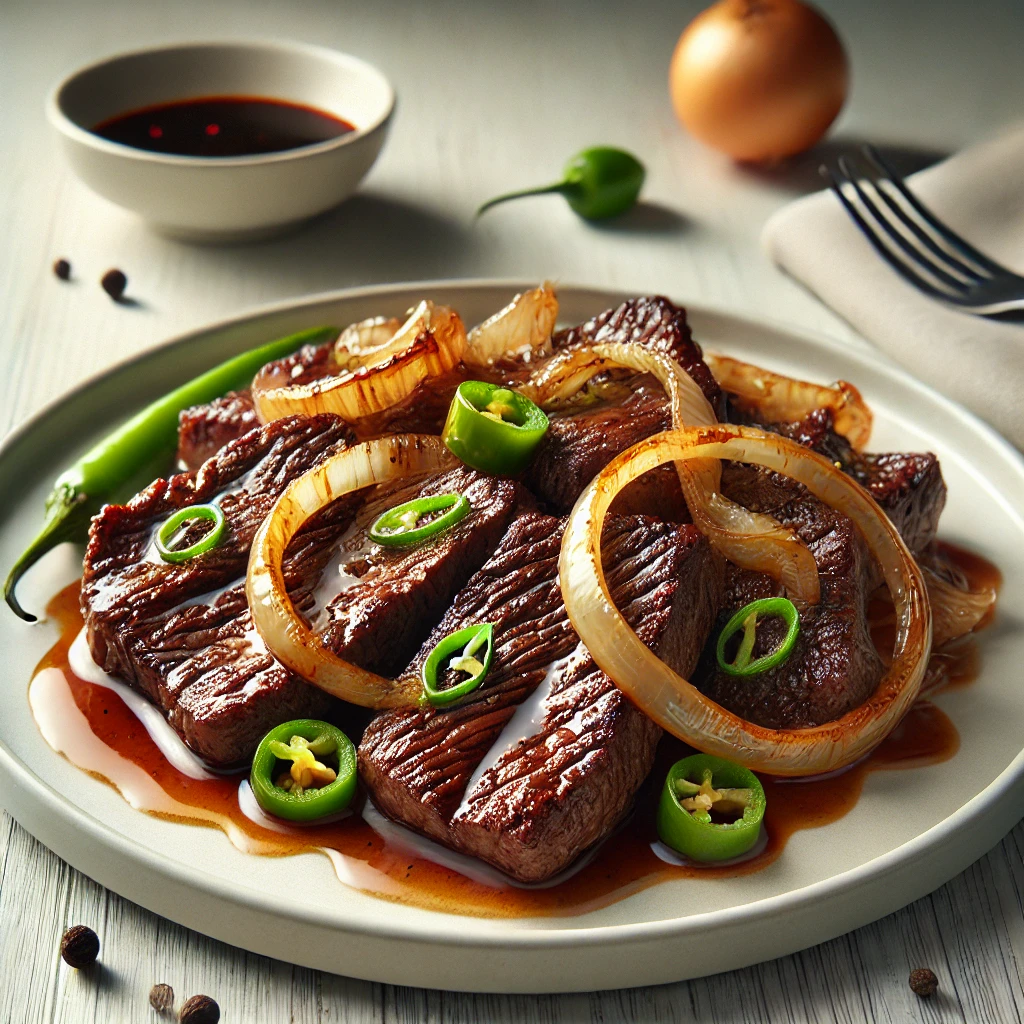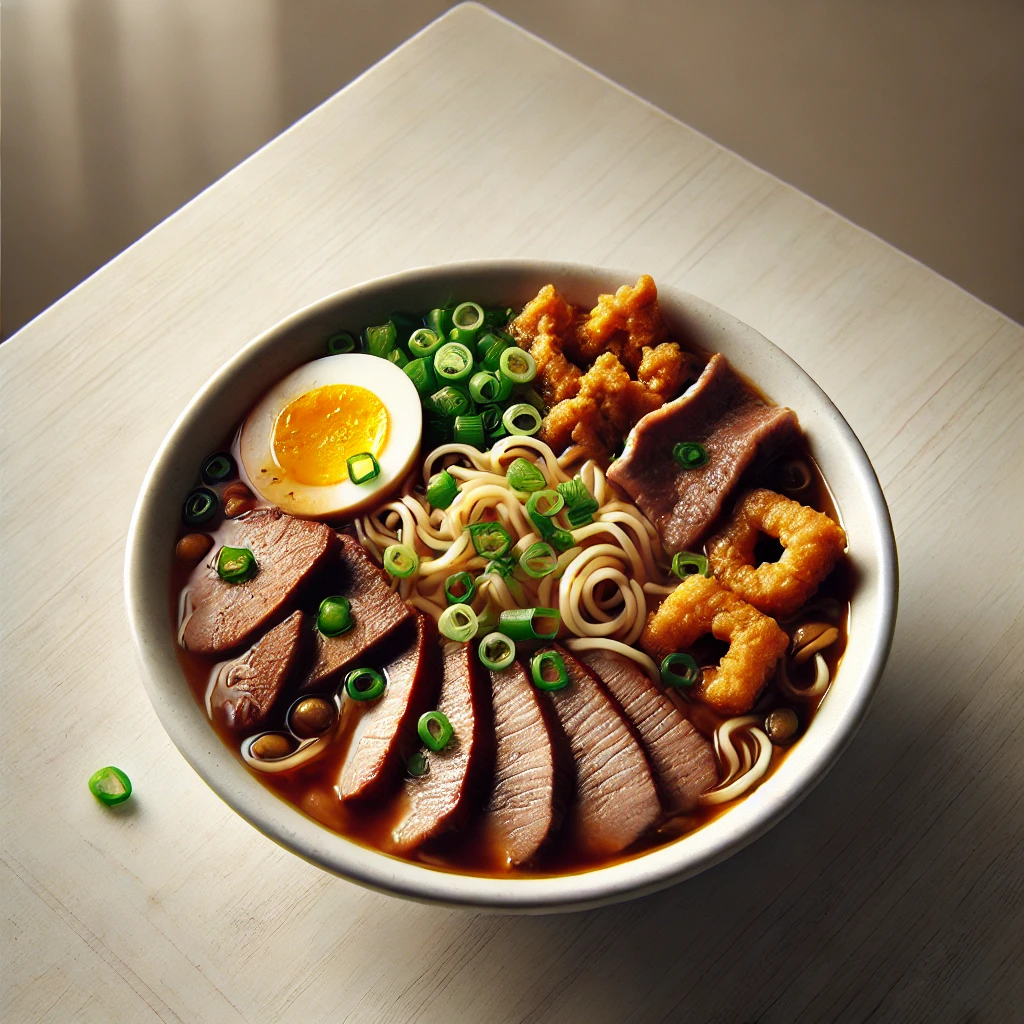Imagine sinking your teeth into a perfectly crispy, golden-brown piece of pork belly, hearing the satisfying crunch as you bite through the crackling skin, and then experiencing the juicy, tender meat that lies beneath. This, my friends, is the magic of Bagnet – a culinary treasure from the Ilocos region of the Philippines that has captured the hearts and taste buds of food lovers around the world.
Bagnet, often referred to as the “Ilocano lechon kawali,” is more than just a dish; it’s a celebration of texture, flavor, and Filipino culinary ingenuity. This twice-fried pork belly delicacy has become an iconic representation of Ilocano cuisine, known for its irresistible crispiness and rich, savory taste. Whether you’re a pork enthusiast or simply someone who appreciates the artistry of well-prepared food, Bagnet is sure to leave a lasting impression on your palate.
What sets Bagnet apart from other fried pork dishes is its unique cooking process, which involves boiling, air-drying, and double-frying the pork belly to achieve that perfect balance of crispy exterior and succulent interior. The result is a versatile dish that can be enjoyed on its own, as a main course, or as a flavor-packed ingredient in other Filipino recipes.
While Bagnet is traditionally prepared with pork, this recipe can be adapted to accommodate various dietary restrictions. For those following a plant-based diet, jackfruit or seitan can be used as a meat substitute, though the texture and flavor will differ from the original. Unfortunately, due to its meat-based nature, Bagnet is not suitable for vegetarian or vegan diets without significant modifications.
Now, let’s dive into the world of Bagnet and learn how to recreate this Ilocano delicacy in your own kitchen!
Recipe Ingredients
To create your own mouthwatering Bagnet at home, you’ll need the following ingredients:
| Ingredient | Quantity |
|---|---|
| Pork belly, skin-on | 2 lbs (900g) |
| Water | 6 cups (1.4 liters) |
| Salt | 2 tablespoons |
| Whole black peppercorns | 1 tablespoon |
| Bay leaves | 3 pieces |
| Garlic cloves, crushed | 6 cloves |
| Vegetable oil for deep frying | As needed |
Optional ingredients for serving:
- Spiced vinegar dip (1/2 cup vinegar, 2 cloves minced garlic, 1 small chopped onion, salt, and pepper to taste)
- Chopped tomatoes and onions
- Steamed rice
Recipe Instructions
Follow these step-by-step instructions to create your perfect Bagnet:
- Prepare the pork belly:
- Rinse the pork belly under cold water and pat it dry with paper towels.
- Using a sharp knife, score the skin of the pork belly in a crosshatch pattern, being careful not to cut into the meat.
- Boil the pork:
- In a large pot, combine water, salt, peppercorns, bay leaves, and crushed garlic.
- Add the pork belly to the pot, ensuring it’s fully submerged in the liquid.
- Bring the mixture to a boil over high heat, then reduce the heat to low and let it simmer for about 1 hour or until the pork is tender when pierced with a fork.
- Cool and dry the pork:
- Remove the pork from the pot and place it on a wire rack to cool completely.
- Once cooled, pat the pork dry with paper towels to remove excess moisture.
- Place the pork in the refrigerator, uncovered, for at least 4 hours or overnight. This step is crucial for drying out the skin, which will help achieve maximum crispiness.
- First fry:
- Heat vegetable oil in a deep fryer or large, heavy-bottomed pot to 350°F (175°C).
- Carefully lower the dried pork belly into the hot oil and fry for about 5-7 minutes, or until the skin starts to blister and turn golden brown.
- Remove the pork from the oil and drain on a wire rack. Allow it to cool completely.
- Second fry:
- Reheat the oil to 375°F (190°C).
- Cut the cooled pork into 2-inch (5 cm) cubes.
- Fry the pork cubes in batches for 2-3 minutes, or until the skin is crispy and golden brown.
- Remove from the oil and drain on a wire rack or paper towels.
- Serve:
- Allow the Bagnet to cool slightly before serving.
- Serve with spiced vinegar dip, chopped tomatoes and onions, and steamed rice on the side.
Recipe Tips & Variations
To elevate your Bagnet-making skills and customize the dish to your liking, consider these helpful tips and variations:
Tips for success:
- Ensure the pork skin is completely dry before frying to achieve maximum crispiness.
- Maintain the correct oil temperature throughout the frying process for even cooking and crispiness.
- Don’t overcrowd the pot when frying; work in batches if necessary.
- For an extra crispy exterior, you can rub the skin with a mixture of salt and baking soda before air-drying in the refrigerator.
Variations:
- Spicy Bagnet: Add chili flakes or cayenne pepper to the boiling liquid for a spicy kick.
- Herb-infused Bagnet: Include fresh herbs like thyme or rosemary in the boiling liquid for added flavor.
- Bagnet Sisig: Chop the cooked Bagnet into small pieces and use it to make sisig, a popular Filipino sizzling dish.
Storage instructions:
- Store leftover Bagnet in an airtight container in the refrigerator for up to 3 days.
- To reheat, place the Bagnet in a preheated 350°F (175°C) oven for 10-15 minutes or until heated through and crispy.
Nutritional Information
While Bagnet is undoubtedly a delicious treat, it’s important to enjoy it in moderation due to its high fat content. Here’s an approximate nutritional breakdown per serving (assuming 6 servings from this recipe):
| Nutrient | Amount per serving |
|---|---|
| Calories | 550 |
| Total Fat | 45g |
| Saturated Fat | 15g |
| Cholesterol | 80mg |
| Sodium | 650mg |
| Total Carbohydrates | 1g |
| Protein | 30g |
Please note that these values are estimates and may vary based on specific ingredients and portion sizes.
Conclusion
Bagnet is more than just a dish; it’s a testament to the rich culinary traditions of the Ilocos region and the Philippines as a whole. As I sit here, savoring a piece of crispy, juicy Bagnet, I’m transported back to the bustling streets of Vigan, where the aroma of this delicacy wafts through the air, enticing locals and tourists alike.
Creating Bagnet at home is a labor of love, but the results are truly worth the effort. The combination of crispy skin and tender meat, paired with the tangy spiced vinegar dip, creates a symphony of flavors and textures that’s hard to resist. It’s a dish that brings people together, whether it’s served as the star of a family gathering or shared with friends over cold beers.
I encourage you to embark on your own Bagnet-making adventure. Don’t be intimidated by the process – with patience and attention to detail, you’ll be rewarded with a crispy, golden masterpiece that rivals any you’d find in Ilocos. And once you’ve mastered the basic recipe, feel free to experiment with different seasonings and serving suggestions to make it your own.
As you enjoy your homemade Bagnet, take a moment to appreciate the culinary heritage it represents. Share your creations with loved ones, and don’t forget to explore other Filipino dishes that showcase the diverse and delicious world of Philippine cuisine. Who knows? Your Bagnet might just become the talk of your next potluck or family gathering!
So, what are you waiting for? Gather your ingredients, fire up that stove, and get ready to experience the crispy, porky goodness of Bagnet in your very own kitchen. Your taste buds will thank you, and you’ll have a new go-to recipe that’s sure to impress. Happy cooking, and may your Bagnet always be crispy and your appetite always satisfied!
Disclaimer: This recipe blog post is based on information available up to 2019. Culinary trends and nutritional recommendations may have changed since then. Please consult current sources for the most up-to-date information on ingredients, cooking methods, and dietary guidelines. If you notice any inaccuracies in this post, please report them so we can correct them promptly.




